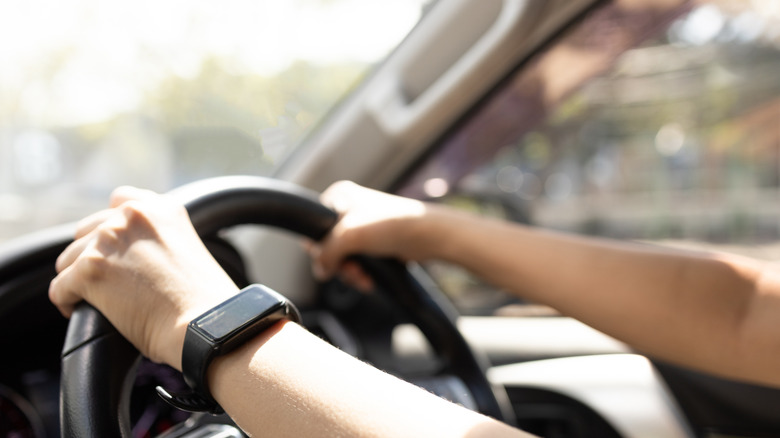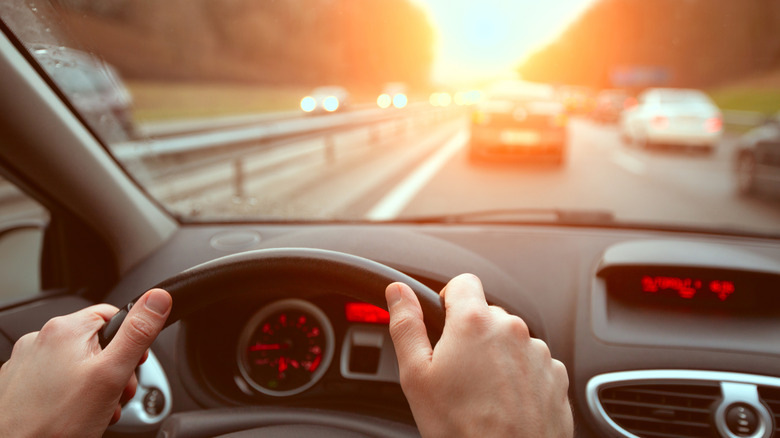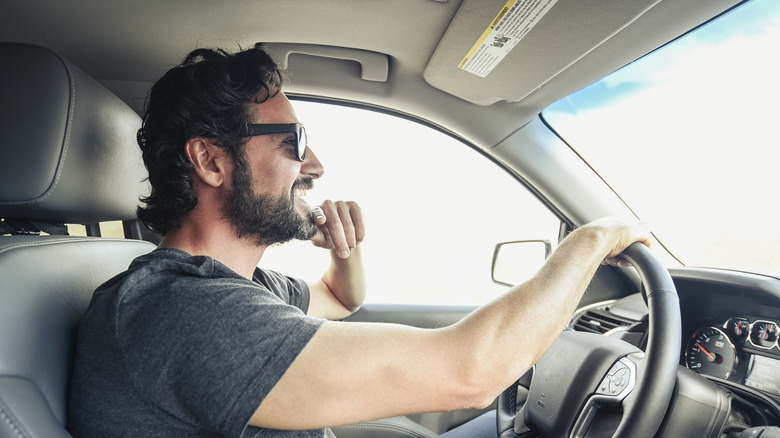Do Car Windshields Block UV Rays? Here's What You Need To Know
You might want to apply sunscreen or wear long-sleeve tops and sunglasses before driving under the hot sun. The glass in your car is not the protective cocoons we once thought.
The two types of UV light that could cause skin cancer are Ultraviolet A and B. UVA has a longer wavelength and can cause tanning and skin aging with prolonged (or repeated) exposure, while UVB has a shorter wavelength and can cause sunburns.
However, both UVA and UVB exposure can damage the DNA in skin cells, leading to premature aging, genetic defects, mutations, and skin cancer. Repeated and unprotected exposure can also cause eye damage, like cataracts and certain eye cancers. UVA and UVB are human carcinogens that can cause melanoma and other types of skin cancers.
Here's the catch: According to real-world testing of random vehicles in 2014, Dr. Brian Boxer Wachler of the Boxer Wachler Vision Institute in Beverly Hills, California, found that most car windshields block out around 96% of UVA rays. However, the side windows were a different story.
UVA vs. UVB rays in cars: What you need to know
Using a UVA light meter to check the ultraviolet protection capabilities of car window glass, Boxer Wachler found that the side windows were far less efficient in blocking the sun's harmful UVA rays. "Even cars that came with factory tint, there was no guarantee that would protect against UV rays," Boxer Wachler said in a Reuters interview.
In addition, only four of the 29 cars tested had side windows that could block more than 90% of UVA rays, and some blocked as little as 44%. Interestingly, the amount or lack of UV protection had no relation to the price or type of vehicle.
Most glass surfaces can block out most UVB rays, including your car's windows and windshield. But the Automobile Association, a U.K.-based drivers group, agrees with Boxer Wachler: clear side windows can block all UVB, it says, but only a third of UVA radiation. It all has to do with the construction or type of glass. Auto windshields offer more UVA protection because of their laminated construction. Side, back, and sunroof windows, though, are tempered glass and have no built-in UVA protection.
How to protect yourself from UV rays while driving
Besides wearing sunscreen or sunglasses to protect the eyes and skin, the best way to protect you, your passengers, and the car interior from the sun's damaging UV rays is to install UV-blocking window film. Then again, not all window tints are the same, and we highly recommend ceramic or carbon tints to ensure up to 99% protection against ultraviolet rays. Ceramic tints are the costlier option, but they are easier to see through at night and offer more extended protection without fading.
Of course, applying clear or shaded tint on the glass can be illegal in some states, and tinting below the windshield's AS-1 demarcation line might lead you to trouble with the law, so check with your state before applying window film. If you don't want to spend big money on glass tinting, installing a blocker like Enovoe car window shades will help considerably, but make sure they don't hamper your ability to see the road.
Lastly, UV rays can also damage the interior of your ride. Prolonged exposure can cause cracking, fading, and accelerated wear on plastic, rubber, vinyl, and leather surfaces. Wiping the cabin parts clean with a moist rag and applying something like 303 Products UV Protectant at least once a month will keep your interior looking new for longer.


